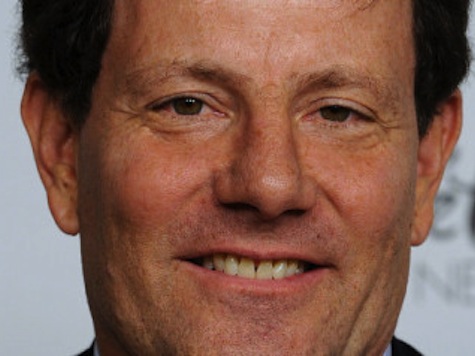
Nick Kristof published a call for gun control in the Saturday edition of the NY Times. While it’s not the worst of the genre, it relies on some disingenuous argumentation to reach its conclusion.
After his introduction, Kristof throws out a few chestnuts like this, “We even regulate toy guns, by requiring orange tips — but lawmakersdon’t have the gumption to stand up to National Rifle Associationextremists and regulate real guns as carefully as we do toys.” Guns are far more heavily and seriously regulated than toys. Connecticut, where this latest shooting took place, had some of the most stringent laws in the country after California and New York.
In fact, the regulations worked in this case by denying Adam Lanza the ability to buy a gun. Instead he killed his own mother by shooting her in the face (possibly while she slept) and stealing her guns. So the regulations that might have prevented this would necessarily be those which would have prevented Mrs. Lanza from buying her guns. Kristof doesn’t want to point this out, because it detaches his argument from reality.
The core of his piece is a comparison to regulations on cars. Here’s his opener, “I understand: shooting is fun! But so is driving, and we accept that wemust wear seat belts, use headlights at night…” Fair enough. Let’s stipulate that seat belts and headlights save lives. What is the equivalent with regard to guns? What can I do to make myself marginally more safe from a crazed shooter? The analogy seems to break down unless we want to mandate body armor.
Kristof continues, “…and fill out forms to buya car. Why can’t we be equally adult about regulating guns?” Again, we already have regulations–including in Connecticut–which require filling out forms to buy a gun. Adam Lanza refused the forms and the mandated waiting period and was turned away. The system of regulations exists, and it worked as advertised yet failed miserably. The question is what else could we have done?
After a laundry list of proposals, Kristof returns to the auto analogy, “some auto deaths are caused by people who break laws or behaveirresponsibly. But we don’t shrug and say, ‘Cars don’t kill people,drunks do.'” Actually, that’s exactly what we do. We socially stigmatize those who drink and drive and we punish them severely after the fact, often taking away their right to drive. We even expect alcohol producers push a “drink responsibly” message. What we don’t do is limit everyone’s access to cars (or really fast cars). We target drunks, not AAA.
Finally there’s this claim, “don’t bother with the argument that if more people carried guns, theywould deter shooters or interrupt them. Mass shooters typically killthemselves or are promptly caught, so it’s hard to see what deterrencewould be added by having more people pack heat.” This is a pretty egregious bit of ignorance.
- Adam Lanza reportedly shot himself as police moved in on him.
- The shooter at New Life Church in Colorado was shot by an armed security guard and immediately killed himself.
- Wade Page killed six people at a Sikh temple in Wisconsin, was shot once by police and then killed himself.
- Omar Thornton killed himself as police closed in after he had killed eight co-workers at a beer distributor.
- Jiverly Wong killed himself when he heard sirens approaching after killing 13 people at an immigration center.
- Sulejman Talovic, the Trolley Square shooter, killed five and wounded four others. His rampage ended when an armed, off duty cop cornered him until SWAT arrived and shot him dead.
In short, many of these mass shooting incidents end when someone else with a gun shows up. Kristof’s gun control recommendations may or may not have some value. What’s certain is that the arguments he uses to advocate for them are neither particularly thoughtful nor well informed.

COMMENTS
Please let us know if you're having issues with commenting.